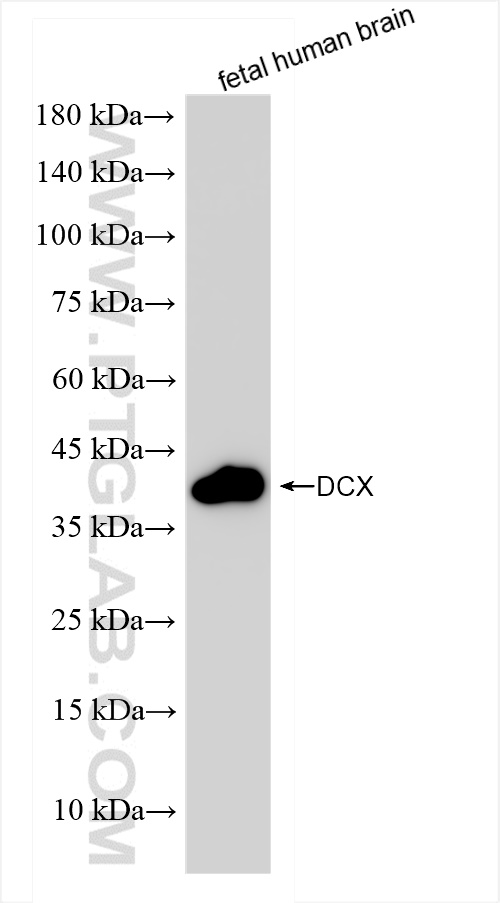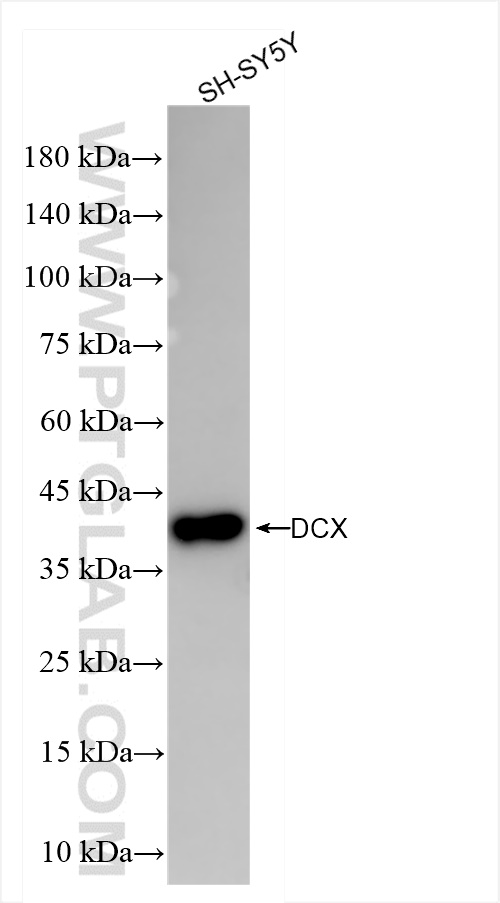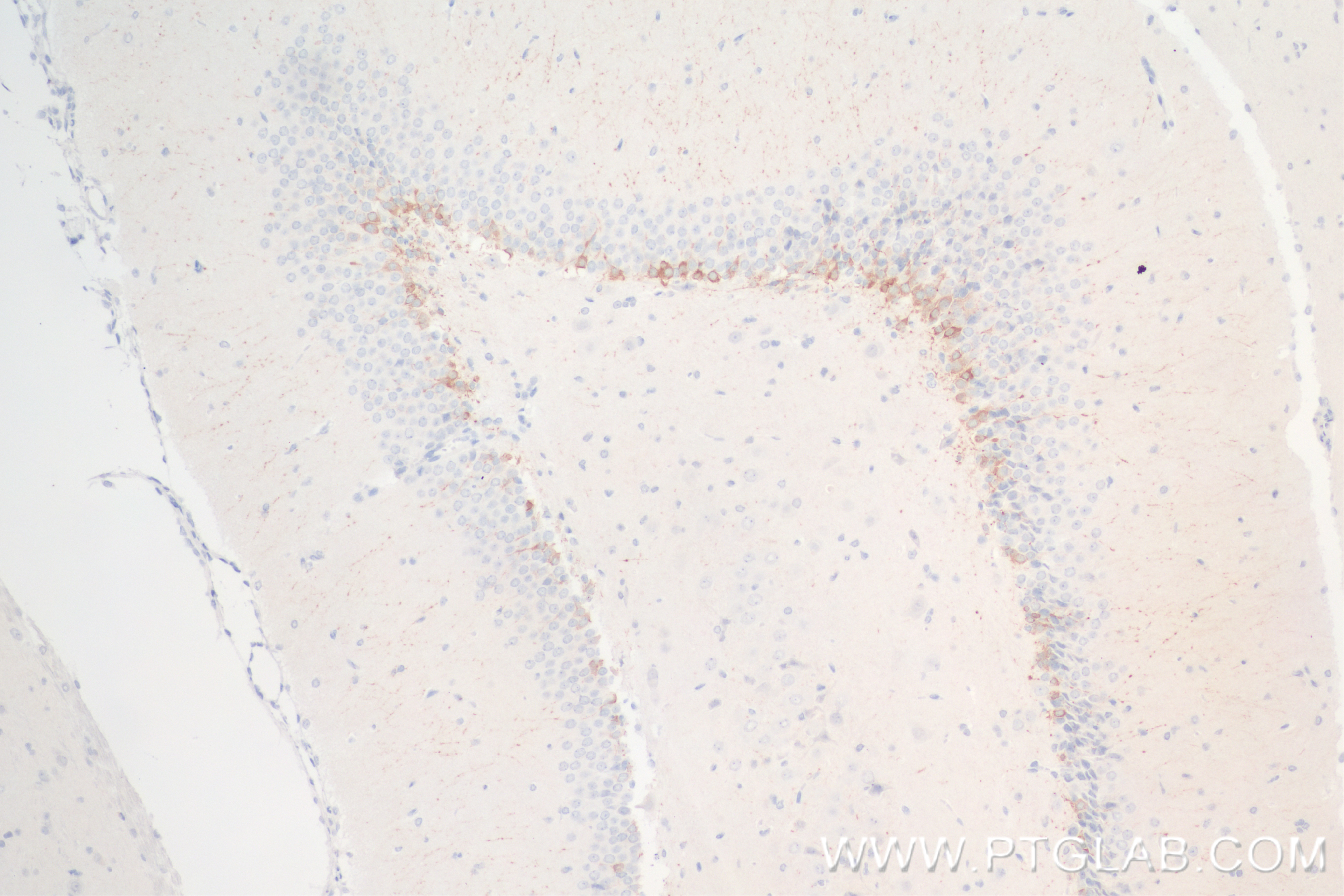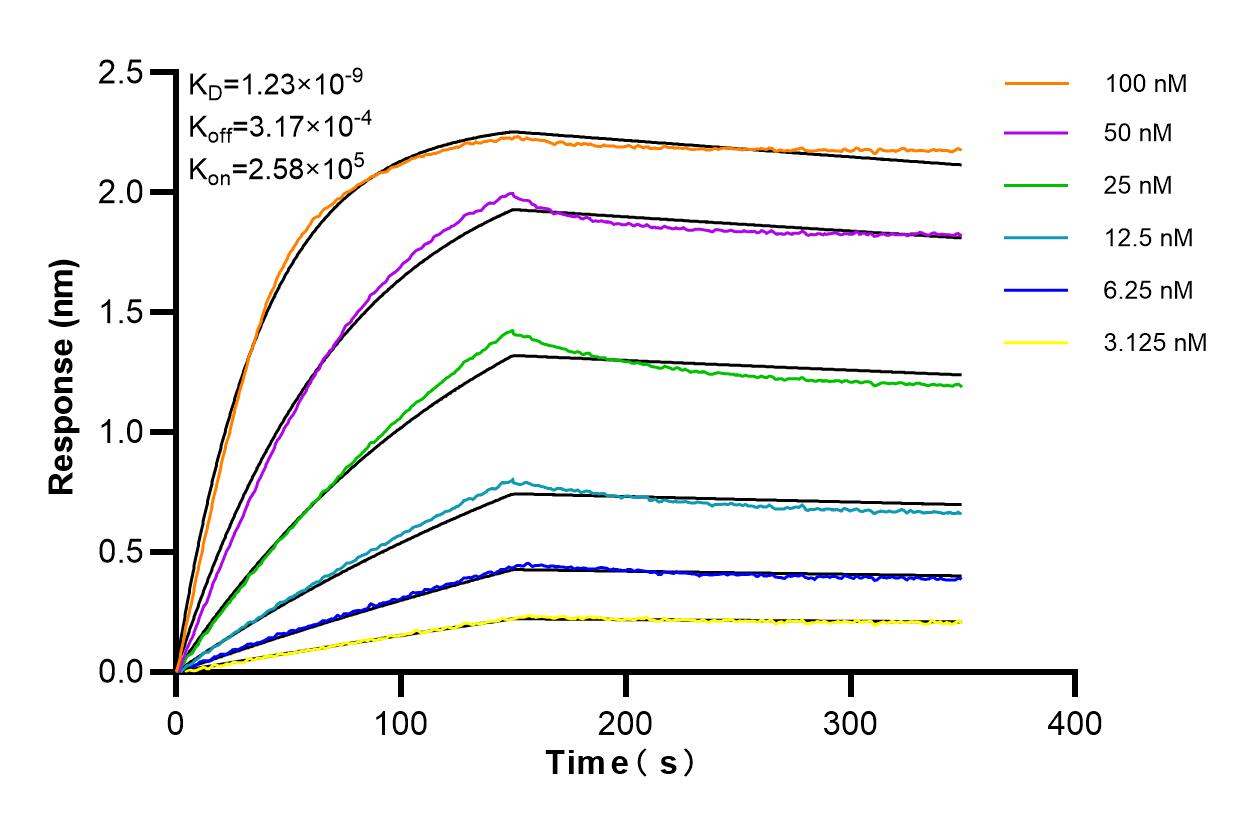验证数据展示
经过测试的应用
| Positive WB detected in | SH-SY5Y cells, fetal human brain tissue |
| Positive IHC detected in | rat brain tissue Note: suggested antigen retrieval with TE buffer pH 9.0; (*) Alternatively, antigen retrieval may be performed with citrate buffer pH 6.0 |
推荐稀释比
| 应用 | 推荐稀释比 |
|---|---|
| Western Blot (WB) | WB : 1:5000-1:50000 |
| Immunohistochemistry (IHC) | IHC : 1:125-1:500 |
| It is recommended that this reagent should be titrated in each testing system to obtain optimal results. | |
| Sample-dependent, Check data in validation data gallery. | |
产品信息
84595-4-RR targets DCX in WB, IHC, ELISA applications and shows reactivity with human, rat samples.
| 经测试应用 | WB, IHC, ELISA Application Description |
| 经测试反应性 | human, rat |
| 免疫原 | DCX fusion protein Ag4945 种属同源性预测 |
| 宿主/亚型 | Rabbit / IgG |
| 抗体类别 | Recombinant |
| 产品类型 | Antibody |
| 全称 | doublecortin |
| 别名 | Lis-X, Lissencephalin-X, Doublin, doublecortin, 241985H1 |
| 计算分子量 | 402 aa, 45 kDa |
| 观测分子量 | 40 kDa |
| GenBank蛋白编号 | BC027925 |
| 基因名称 | DCX |
| Gene ID (NCBI) | 1641 |
| 偶联类型 | Unconjugated |
| 形式 | Liquid |
| 纯化方式 | Protein A purfication |
| UNIPROT ID | O43602 |
| 储存缓冲液 | PBS with 0.02% sodium azide and 50% glycerol , pH 7.3 |
| 储存条件 | Store at -20°C. Stable for one year after shipment. Aliquoting is unnecessary for -20oC storage. |
背景介绍
DCX (Doublecortin) is a microtubule-associated protein that is essential for normal brain development. DCX is expressed in migrating neurons throughout the central and peripheral nervous system during embryonic and postnatal development. Anti-DCX antibodies are widely used for detection of neurogenesis. It's also a common neuron marker since its expression is specific to neurons.
实验方案
| Product Specific Protocols | |
|---|---|
| WB protocol for DCX antibody 84595-4-RR | Download protocol |
| IHC protocol for DCX antibody 84595-4-RR | Download protocol |
| Standard Protocols | |
|---|---|
| Click here to view our Standard Protocols |



